Dec 10, 2014
About That Everlasting Living
Offered by David Apollo
ConserveLiberty is admittedly going out on a limb in addressing the topic of Everlasting Life or Living.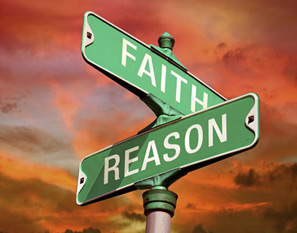
However, from a biological perspective, the topic is rather easy to consider, and blind speculation can be kept to a minimum. One simply need look at what is observed and move aside the various hopes and fears that cause us to suppose a thing that would be nice for us, but that we have not ever observed.
In fact, the topic is so easy that this could be a rather short essay. It won't be, however, because the mind struggles with its fantasies despite solid and non-deviating observation and experience. For those who might benefit with a longer essay to help with clarity, you've found it here.
Let's start.
The Earth is estimated to be about 4.6 billion years old, having formed from the accretion of leftover protoplanetary disc of dust, rock, and gas that accompanied the formation of our sun. Evidence suggests that life has existed on the Earth for at least 3.5 to 3.7 billion years or more, a time just after the end of the Late Heavy Bombardment (LHB). While it is possible that life on Earth might have existed before or during the LHB, the intense surface destruction and melting that would have been ongoing during that time makes finding evidence of life before the end of the LHB very difficult.
We do not know how life (metabolically active, reproducing organisms) arose here. Was it spontaneously generated via mechanisms consistent with natural law? Or, did it arise here from another planet, moon, asteroid, comet, meteorite, or remnant from an earlier solar system? (In which case, the question still remains, "How did it get there?")
- Scientific reference is - Evidence for biogenic graphite in early Archaean Isua metasedimentary rocks
- Scientific reference is - Microbially Induced Sedimentary Structures Recording an Ancient Ecosystem in the ca. 3.48 Billion-Year-Old Dresser Formation, Pilbara, Western Australia
- Layman's reference is - Oldest fossil found: Meet your microbial mom
Either A). it started spontaneously (abiogenically) somewhere, or B). it has always been. That's a statement that should pass all logical muster, so we will simply assume that "it" is true. "It" meaning (either A or B) is true.
If B, then life is everlasting in the true sense. This would be difficult to prove even if true.
If A, then life may have had its spontaneous start elsewhere or here, for example, and would be expected to persist here so long as it does not become impossible to do so by the laws of chemistry and physics. And, judging by the power of selective evolution as a mechanism for thriving in all sorts of environments, those laws appear to give life a pretty wide latitude.
With regards to the definition of what is actually meant by "life", Wikipedia has as good a discussion as any.
Life is not so much a matter of the Individual as it is about the Lineage.
It's interesting that when people think about the meaning of the term "Everlasting Life" they think about the individual. That is an artifact of the part of our neural system from which we derive consciousness. The neural system as a whole is designed for control and regulation of the individual, as well it should be.
Yet, the notion of Everlasting Living really is much broader than the individual, which is but one (necessary) ingredient of the phenomenon. What is living in an everlasting fashion is not the Individual, but rather the Lineage of which the individual is a part.
Thus, to be more clear and to coin a new acronym, from here on when we speak of everlasting life or living, we shall be referring to the Everlasting Living of the Lineage, abbreviated as the ELL.
Before we go much further, let us take a detour from our human perspective as a way to advance the position.
Let's say you have a pet you would like to keep around "forever." I've often thought that if one wants to keep one's pet around for an entire human lifetime, then let it have offspring. Your cat or dog "of the moment" is going to eventually die. If it has offspring, and you keep one (or more), then you will have a remnant or continuation of "Spot" or "Princess" around for a much longer time.
It is the lineage that lives on and on and on. The individual is simply one temporary rest stop as the lineage progresses, living, reaching from individual A far in the past to individual Z far in the future.
Alternatively, consider a body part - for example, your hand. Through its life, it develops, suffers injuries, heals. And yet, the individual aspect of the hand is not the whole hand. Rather, the individual aspects are each living cell of the hand. With regard to hand, we don't usually concern ourselves with those individuals. Rather, it is the entire collected lineage that results in a persistent hand and its history that we care about, from its beginning as a few cells in the womb until its expiration either due to accident or death.
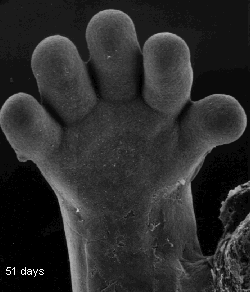
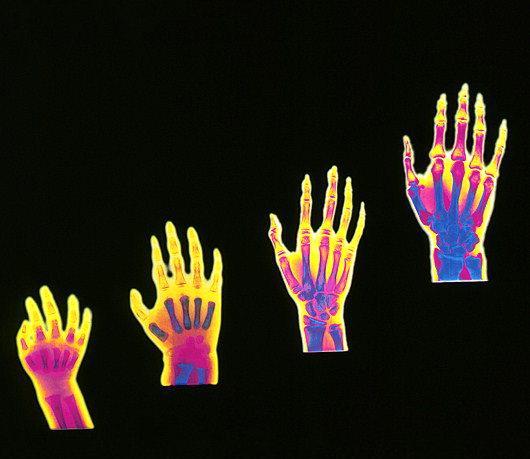
The point is that while the human individual may seem really important to individual humans (and, they actually really are!), the practical biological take-home lesson is that from an everlasting point of view, the individual is not intended for Everlasting Living. In fact, it is unnecessary that the individual live forever. Rather, it is the lineage that is part of an everlastingly living process. The ELL.
Individuals keep the ELL going as they fulfill their roles in the process. A process which for the individual is decidedly temporary.
This is not a negative view of things. Not even bad news. Rather, it is the truth of the way we participate in a living process that has been ongoing on this earth (and/or elsewhere) for over three billion years or more. It will continue here for what may seem like forever from our perspective, so long as our sun, as it ages, does not consume us before life vacates this planet for elsewhere.
→ The section above was last updated 28 Sep 2016 13:15 PST ←
Summing up our participation in the Everlasting Living of the Lineage (ELL):.
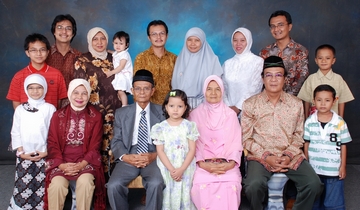
- Individuals across all living species do not (meaning, no evidence yet found) live forever.
- The finite nature of individual life is not a matter of lifestyle, diet, or right thinking.
- Finite individual life is not a design flaw within nature. Rather, Reproduction of the individual is the feature that nature has been using uninterrupted for at least three billion years, resulting in the Everlasting Life of the Lineage (ELL). You are a member of a lineage that extends through branches back at least 3+ billion years.
- A lineage or lineage branch that continually reproduces offspring will persist as long as an energy source and a habitable environment is available.
- If the mechanism for reproduction includes sufficient variation generation so that adaptations to differing environments and food sources can me made ... well then we can understand how a lineage and lineage branches can persist and diversify for three billion years or more on this planet.
In fact, individual everlasting living is so unimportant to nature that it is hard to imagine any scenario in which it would be selected for. It is simply completely unnecessary for lineage survival.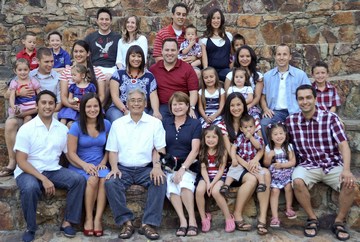
And yet, the Individual is important, because individuals are what are produced, and reproduced as the mechanism for the lineage to live on and on and on.
Thus, biologically speaking, if you want to directly participate in the ongoing process of ELL that your lineage is a part of ... then reproduce.
ConserveLiberty understands that for many, this type of default participation in the ELL is not exactly what folks are concerned about when thinking of the notion of living longer than a normal lifespan.
Many [billions] have asked the question, "What happens to us after we die?"
Decoding, what is actually being asked is, "What happens to: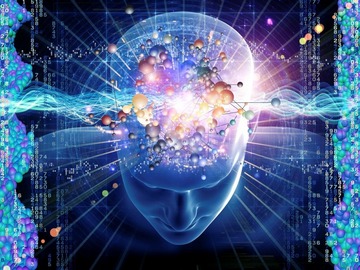
(Authors note - by definition, when that thing (mind) that is "me" is silenced, one cannot, and thus will not, be aware of it!)
- the thing I conceptualize as "me"?
- the thing (mind) I experience my relationships with?
- the thing (mind) that (no matter what else happens to any other part of my body) I am not aware of ever being silenced?
- my mind? The 'I' that does the thinking and the deciding?"
That thing (mind) that we conceptualize as "me" or "self" is our "consciousness."
That the answer to the question ("what happens...") is that our consciousness (what we regard as "self") is obliterated at physical death is a hard concept for many to consider accepting. The "obliteration of self" is a somewhat unbalancing concept. Especially since it is the mind that is contemplating it. The mind generally develops a hard habit for existing.
The instinctual belief that our self persists after our body's physical death may likely be a Personality Spectrum Filter. If so, we will refer to it as the AfterLife Belief Personality Spectrum Filter, and may develop that at a future date. If it is developed, this ELL Page may be updated. Of course, if an instinctual AfterLife Belief filter exists, then it will be easier for some and more difficult for others to embrace the notion of the finite individual (including "self") life in the context of the ELL.
Why would the mind fancy itself to be less finite than the living organic body that is responsible for generating it?
Physically alive human beings find a conscious self essential. And, a conscious mind finds a physically alive body essential. Since the mind is not aware of its beginning (the moment it started up,) it somewhat naturally interprets its existence as being without a boundary, if not infinite. It has no remembered experience of its boundary, and so it can't imagine its beginning, and it can't imagine its end. Practically speaking, however, there is no need for it to imagine its end.
From a selective evolution perspective, once the body has died, there is also no practical biological need for its mind with regard to survival of the lineage. Thus, selective, consequential biology would find no relevance for wiring up minds to contemplate their own boundaries or lack of boundaries at death one way or another. It just happens that the self extinguishes at death, therefore there is no need to anticipate coping with or responding to it in some way.
One could posit that being able to anticipate the extermination of self at death might have a selective advantage for survival. The reality is that reproduction does just fine for survival of the lineage. Still, to the extent that parental longevity might confer additional survivability to offspring at the margins, a little fear of extermination of the self due to death could be advantageous for offspring survival until they are able to procreate. We cope with fears using narratives. The narrative of a self that outlasts the physical body can be calming. Since we are unable to imagine the boundary of self via our own experiences, it is understandable how one might embrace the conclusion (or hope) that the mind might persist after the body dies.
So we have a situation where there is no requirement in nature for the mind to outlast or be independent from the physical body (and thus we observe no evidence for it, in any species.) And yet fear of the death of self may have selective advantage, regardless of whether or not it is moot. And so we deal with that through narrative. And, possibly, a filter, the AfterLife Belief Personality Spectrum Filter may have evolved - stronger for some, weaker or absent in others.
Again, not really a necessary feature for the Everlasting Life of the Lineage (ELL). Nor do the individual cells in my hand have the feature that their own animating perspective somehow be preserved after they die. The new individuals replacing them have their own individual motivating objectives and will get along just fine doing their part to keep the hand a living thing.
Use, Reuse, Organization, and Heredity
Rather than wonder, "What happens to our minds or souls after our bodies die?" it is probably more interesting and practical to ask, "What happens with our bodies and minds and souls before we die?"
What counts, as several important philosophers have often implied is, "What choices are you making while you are resident within the Kingdom of the Living?"
Then, at physical death, the curious might still ask, "What happens to those parts of us that are with the lineage after we as individuals die?"
Biology answers that last question for us. Those parts of us that are with the lineage are reused.
There are a few components that are part of the lineage process as it has been ongoing on Earth for over three billion years. At root level, lets just refer to one of those components as "dust, rock, and nutrients." These are the atoms and molecules that make up our bodies while we were alive. In fact, during our lives there is a constant flow of these materials in and out of the organized vehicle we think of as our individual bodies. A wondrous phenomenon of atomic and molecular intercourse occurs between our environment and the other individual animals and plants within it.
Then, at a higher organizational level there are our genes, and the way in which they were arranged and regulated in order to sustain and animate the organized vehicles we call our cells, organs, and bodies. Because these genes replicate both for individual development and healing, but also for reproduction, they are essential to the propagation of the lineage of things we refer to as "living."
Thus, the propagation of the ELL is made possible via a genetic mechanism, and ultimately the genes themselves that have evolved to drive it in so many wonderful and myriad of ways.
Thus, our participation in the ELL requires:
That's it.
- the root level atoms (mostly permanent so long as they are not acted upon at a nuclear level, which in nature usually only occurs in stellar environments) that make up our bodies,
- the metabolic activities that they are engaged in, and
- a level of organization that is heritable from one reproducing individual to the next.
Spirituality and the Everlasting Living of the Lineage
Remember, we define Spirituality as experienced at an instinctive level and referring to a "relationship" with something apart from our thinking mind.
The notion of Everlasting Life is thought of as a spiritual topic because we are drawn into considering, wondering, and creating narrations about it instinctively, and desiring that what closure we find is based in Truth.
So here is the lowdown:
There is a relationship, a relevance between the Biological and the Spiritual, between Reality and the Understanding of the Truth of Reality. If you are going to directly participate in Everlasting Living, then you are going to have kids and they are going to have your grandkids.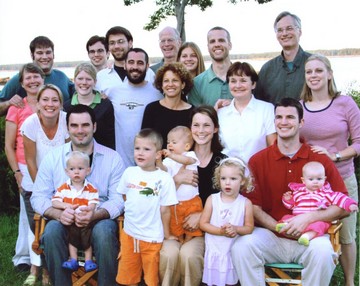
As a mammal, if you are going to have kids, you will join biologically with another, which, biologically speaking, IS marriage. We join at the genetic level in order to beget offspring. Direct participation in the ELL for all mammalian species requires the union of one with another genetically.
Without procreation, participation in the process of the ELL is real, and important, and yet not as direct. These words are candid, and intentionally chosen. Those who do not procreate are equivalent in importance or impact to the entire phenomenon of the ELL. However, their contributions are not equivalent, their biological contribution to the lineage does not continue. What comes after them does not issue from them biologically, even though it may depend on them socially or environmentally. What "comes after" for those who do not procreate does not flow from a biological marriage of them with another. Non-reproducing individuals do feed and nurture and advance the Lineage in myriad indispensable ways, but they do not propagate it.
All living mammalian things on this planet today are offspring. They flow from the biological marriage of one with another.
"What happens to those parts of us that are with the lineage after we as individuals die?"
That depends on whether we are reproductive or not.
The approach taken by ConserveLiberty for contemplating our place in the ELL, and how we achieve direct or supportive participation within it does differ from a variety of the narratives that we have been indoctrinated with throughout our lives.
And yet, the purpose of the Spirituality section of the ConserveLiberty resource is to offer positions that might bring us to relationship with Truths that can at the very least be partially knowable.
Beware of proposed truths that can never be verified - that are offered on faith only. There is no way to distinguish between unverifiable imagination that is false, and unverifiable imagination that might, through sheer random chance, be true. Alienation from Truth, even if comfortable, is not only a false harmony - it is not harmony at all. The intention of a healthy Spirituality is to find oneself at ease with That Which Really Is.
Consider thoughtfully.
spirituality/20141206_spirituality_everlasting_living.php
